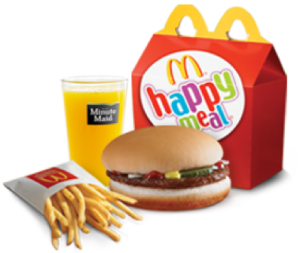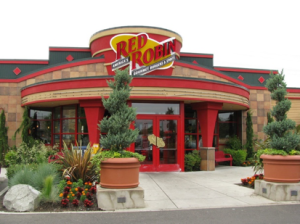We often search to find indicators to help us prepare for the good and the bad. An economic indicator is defined as a statistic used to gauge future trends in a nation’s economy. Reports on these indicators are released monthly, quarterly, and annually to help the public understand how things are going within our country. Gross Domestic Product (GDP), personal income, and retail sales are among the more popular indicators we analyze.
However, there are many other markers that people have come up with to predict the economy. Notoriously known by its slogan “i’m lovin’ it” and its clown mascot, McDonald’s has contributed to create affordable meals during times of need. While most people are nervous and sad when the economy is falling or acting poorly, the Happy Meal Indicator reacts in direct correlation with the economy.
At McDonald’s and other restaurants around the globe, the Happy Meal Indicator works such that “in an effort to protect profit margins, restaurants downsize free offerings to kids like crayons and toys” (Platt). This measure allows us to see how big corporations are adjusting to the poor economic activity and loss in revenue. During the 2009 recession, gourmet burger chain Red Robin halved the amount of crayons they gave to kids to color at their tables. I would assume many children were upset that green was no longer when they were given blue and red crayons.
There are no actual numbers that can be calculated from the Happy Meal Indicator, other than alerting us how the hospitality industry is reacting. By analyzing the expense cuts on things such as toys, crayons, and other freebies we are able to predict that corporations have less free cash on their balance sheet and spending is becoming a concern. Another example of this is that many hotels held back from leaving chocolates on their guests’ pillows during the recession as a means to save money.
Although restaurants like McDonald’s and Red Robin look to cut costs during these hard times, they have a better survival rate than others. People want to find the cheapest alternatives to feed their family and support a “normal” lifestyle, so they turn to the dollar menu and cheap food options.
We may or may not notice when our favorite brands have left out a toy in our happy meal, but economists do. There are reasons behind this madness, the themes of toys always coincide with the latest hit film or a major event going on. It is a way to attract people to spend more money; however, the companies can sometimes no longer afford this marketing stunt. Now understanding the Happy Meal Indicator, we will be one step ahead of our colleagues only by knowing whether or not we receive a toy or if our Red Robin no longer has crayons.


Leave a Reply
You must be logged in to post a comment.